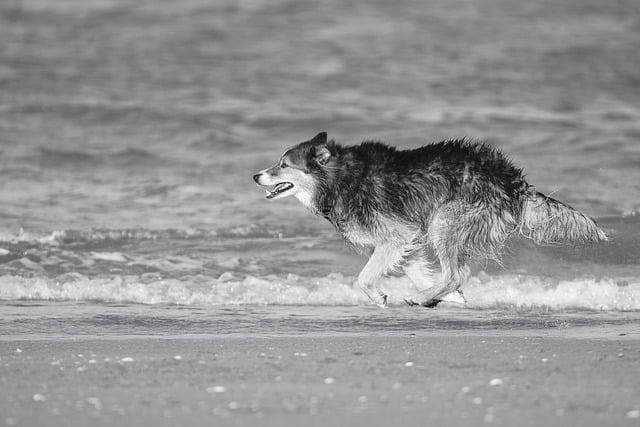In a quiet living room, Max the golden retriever lay on his favorite rug, his tail thumping softly against the floor. His owner, engrossed in a phone call, barely noticed the longing glances Max cast her way. As the hours passed, his once-joyful demeanor faded, replaced by a heavy sigh. Dogs, like Max, thrive on connection and companionship. Ignoring them can lead to feelings of sadness and loneliness. By acknowledging their needs, we not only enrich their lives but also strengthen the bond that makes our relationship so special. Don’t let your furry friend feel forgotten—give them the love they deserve.
Contents
- Understanding Canine Emotions and the Impact of Human Interaction
- Recognizing Signs of Sadness in Dogs and Their Behavioral Responses
- The Importance of Quality Time for Your Dogs Mental Well-being
- Effective Strategies to Strengthen Your Bond and Prevent Canine Loneliness
- Q&A
Understanding Canine Emotions and the Impact of Human Interaction
Dogs are incredibly perceptive creatures, capable of experiencing a wide range of emotions, including sadness. When a dog is ignored, it may interpret this lack of attention as a form of rejection or abandonment. This emotional response can lead to feelings of loneliness and distress, which are often manifested in their behavior. Understanding this emotional landscape is crucial for fostering a healthy relationship between humans and their canine companions.
Research has shown that dogs are highly attuned to human emotions and body language. They can sense when their owners are upset or distracted, and this awareness can significantly impact their own emotional state. When a dog feels neglected, it may exhibit signs of sadness such as:
- Withdrawal from play or social interaction
- Increased vocalization, like whining or barking
- Changes in appetite or sleeping patterns
- Destructive behavior, as a means of seeking attention
Moreover, the bond between a dog and its owner is built on trust and companionship. Ignoring a dog can disrupt this bond, leading to anxiety and insecurity. Dogs thrive on routine and positive reinforcement, and when they feel overlooked, they may struggle to understand their place in the household. This confusion can exacerbate feelings of sadness, making it essential for owners to engage with their pets regularly.
To mitigate the emotional impact of neglect, it is vital for dog owners to prioritize quality time with their pets. Simple actions, such as daily walks, play sessions, or even just sitting together, can significantly enhance a dog’s emotional well-being. By recognizing the signs of sadness and actively engaging with their dogs, owners can foster a more fulfilling and emotionally supportive environment, ensuring that their furry friends feel loved and secure.
Recognizing Signs of Sadness in Dogs and Their Behavioral Responses
Understanding your dog’s emotional state is crucial for fostering a healthy relationship. When dogs experience sadness, they often exhibit a range of behavioral changes that can be subtle yet significant. Some common signs to look for include:
- Withdrawal: A sad dog may retreat to a quiet corner, avoiding interaction with family members and other pets.
- Changes in Appetite: A noticeable decrease or increase in food intake can indicate emotional distress.
- Excessive Licking or Chewing: Dogs may engage in compulsive behaviors, such as licking their paws or chewing on furniture, as a coping mechanism.
- Vocalizations: Increased whining, whimpering, or barking can signal that your dog is feeling neglected or unhappy.
Behavioral responses to sadness can vary significantly among individual dogs. Some may become more clingy, seeking constant reassurance and attention, while others might display aggression or irritability. It’s essential to observe your dog’s typical behavior to identify any deviations that could indicate emotional turmoil. For instance, if your usually playful pup suddenly becomes lethargic or disinterested in activities they once loved, it may be a sign that they are feeling down.
Moreover, the impact of your attention—or lack thereof—can profoundly affect your dog’s mood. Dogs are social animals that thrive on companionship and interaction. Ignoring them for extended periods can lead to feelings of abandonment, which may manifest in various ways. If your dog starts to exhibit signs of sadness after you’ve been preoccupied or away, it’s a clear indication that they are emotionally affected by your absence.
Recognizing these signs and understanding their implications is vital for addressing your dog’s emotional needs. Providing consistent affection, engaging in regular playtime, and ensuring they feel secure in their environment can help mitigate feelings of sadness. By being attuned to your dog’s emotional state and responding appropriately, you can foster a happier, healthier relationship that benefits both you and your furry companion.
The Importance of Quality Time for Your Dogs Mental Well-being
When it comes to our furry companions, the significance of spending quality time with them cannot be overstated. Dogs are social animals that thrive on interaction, and neglecting their emotional needs can lead to feelings of sadness and anxiety. Engaging with your dog not only strengthens your bond but also plays a crucial role in their overall mental health. By dedicating time to your pet, you are actively contributing to their happiness and well-being.
Quality time spent with your dog can take many forms, each offering unique benefits. Consider incorporating activities such as:
- Daily walks: Regular exercise helps alleviate stress and provides mental stimulation.
- Playtime: Engaging in games like fetch or tug-of-war can boost their mood and energy levels.
- Training sessions: Teaching new tricks or commands not only enhances obedience but also stimulates their minds.
- Snuggle time: Simply being close to your dog can provide comfort and reassurance.
Moreover, the absence of interaction can lead to behavioral issues in dogs. When they feel ignored, they may resort to destructive behaviors, excessive barking, or even withdrawal. These actions are often cries for attention and signals that your dog is struggling with feelings of loneliness. By recognizing these signs, you can take proactive steps to ensure your dog feels valued and loved.
Ultimately, investing time in your dog’s emotional needs is a win-win situation. Not only does it enhance their mental well-being, but it also enriches your relationship with them. A happy dog is a well-adjusted dog, and the joy they bring to your life is immeasurable. Prioritizing quality time with your pet is one of the best ways to ensure they lead a fulfilling and joyful life.
Effective Strategies to Strengthen Your Bond and Prevent Canine Loneliness
Building a strong connection with your canine companion is essential for their emotional well-being. Dogs thrive on companionship and interaction, so incorporating regular activities into your routine can significantly enhance your bond. Consider engaging in daily walks, which not only provide physical exercise but also stimulate their senses and offer opportunities for socialization. **Interactive play sessions** with toys or games like fetch can also foster a sense of joy and connection, making your dog feel valued and loved.
Training sessions are another effective way to strengthen your relationship. Teaching your dog new commands or tricks not only stimulates their mind but also reinforces your role as a leader in their life. Use **positive reinforcement techniques**, such as treats and praise, to encourage good behavior and create a rewarding experience for both of you. This not only helps in building trust but also reduces feelings of loneliness, as your dog learns to rely on you for guidance and support.
Creating a comfortable and stimulating environment at home is crucial for preventing feelings of isolation. Ensure your dog has access to **enrichment activities** such as puzzle toys, chew items, or even a cozy space where they can relax. Consider setting up a designated area where they can observe the outside world, as this can keep them entertained and engaged. Additionally, incorporating calming music or leaving the television on can provide a sense of companionship when you’re away.
Lastly, socialization with other dogs and people is vital for your pet’s emotional health. Arrange playdates with other dogs or visit dog parks where they can interact with their peers. This not only helps alleviate boredom but also teaches them important social skills. Remember, a well-socialized dog is less likely to experience loneliness, as they learn to enjoy the company of others, both human and canine. By implementing these strategies, you can create a fulfilling and enriching life for your furry friend, ensuring they feel loved and secure even in your absence.
Q&A
-
Do dogs experience emotions similar to sadness?
Yes, dogs can experience a range of emotions, including sadness. They may not feel sadness in the same way humans do, but they can show signs of distress when they feel ignored or neglected.
-
What signs indicate that a dog is sad when ignored?
Common signs of sadness in dogs include:
- Loss of interest in activities
- Excessive whining or barking
- Changes in appetite
- Withdrawal from social interactions
-
Can ignoring a dog lead to behavioral issues?
Yes, prolonged neglect can lead to behavioral problems such as anxiety, aggression, or destructive behavior. Dogs thrive on companionship and interaction, and ignoring them can create feelings of insecurity.
-
How can I prevent my dog from feeling sad when I’m busy?
To minimize feelings of sadness, consider:
- Engaging in regular playtime
- Providing mental stimulation through toys
- Establishing a routine that includes quality time
- Using positive reinforcement to encourage independence
ignoring your dog can lead to feelings of sadness and anxiety. Understanding their emotional needs is crucial for fostering a strong bond. Prioritize quality time with your furry friend to ensure their happiness and well-being.

大家好,我是彼得潘,專業的手法身體治療師。我喜歡探索和研究各種主題,並透過與人工智慧的合作分享專業、實用、有趣的文章。我們定期進行人工審核,以確保內容的準確性。如果您發現文章中有任何不準確的地方,請隨時與我們聯繫,我們會及時糾正。您可以透過 [email protected] 與我們聯繫。



